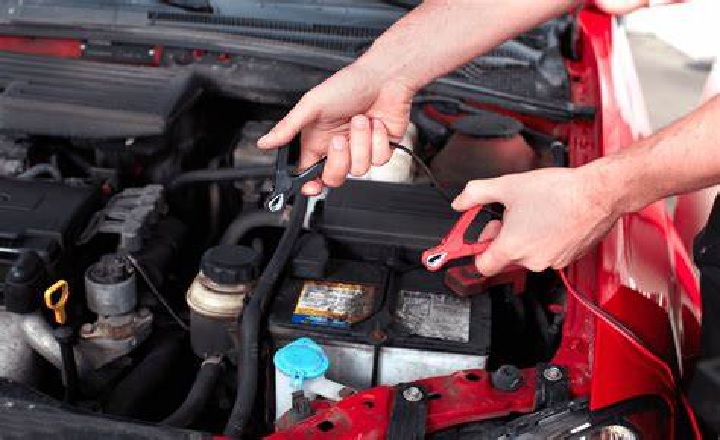Having a car with a dead battery can be very frustrating and inconvenient. Knowing how to extend battery cables car can help you out of a bind when you least expect it. Fixing the problem yourself could also save you time and money that would have gone towards bringing it to a mechanic or store. This article will discuss how to safely extend your car’s battery cables so you never have to be stranded again!
Having a car with a dead battery can be one of the most frustrating experiences on the road. Whether you’ve left your headlights on overnight or are out of town and need to jump-start your vehicle.
How to Extend Battery Cables Car?
Extending battery cables on a car can be simple if done correctly. With the right tools and supplies, you can extend your car’s battery cables quickly. It’s important to know how to safely and correctly extend the battery cables. Extending battery cables for any car is easy with the right materials and knowledge.
- You will need to determine the length of cable required for your car’s specific model and make.
- You will also need heavy-duty electrical tape, wire cutters, crimp connectors, and a soldering iron.
- Once you have all the required materials, cut the two existing cables with wire cutters at least six inches from each other.

Properly maintaining and extending your car battery cables is an important part of ensuring the longevity of your car’s battery. Battery cables connect the electrical components in a vehicle to the battery, providing them with power. If not cared for properly, rust and corrosion can form on the cables, decreasing efficiency. Extending these cables yourself is easy if you have basic tools around your house.
Extending battery cables may sound intimidating, but any Dyer can do it successfully with some patience and skill. It would help to have a pair of insulated pliers or wire cutters to cut away any damaged cable parts.
How does a Car Battery Work?
A car battery is essential to any vehicle, providing the necessary power to start and keep the engine running. But how does a car battery work? Knowing how a car battery works can help you better understand automotive technology and diagnose potential issues with your vehicle’s electrical system.

At its core, a car battery is simply a collection of cells connected in one unit. These cells generate electricity through chemical reactions between lead plates and sulfuric acid electrolyte solution. When you turn the key in your ignition, the voltage from these cells creates enough energy to start your engine. As long as adequate charge levels are within the cells, this process will repeat itself each time you turn on your vehicle.
- Maintaining proper charging levels is important for your car battery to keep working correctly.
- When you turn on your car, the alternator converts motion from the engine into electrical energy that charges up your battery.
- The stored energy then powers all of the necessary components in your vehicle, including lights and other accessories.
- When you turn off your car, this process works in reverse excess energy is returned to the battery for storage until it is next used.
What Causes Battery Cable and Terminal Corrosion?
The battery and its connections are integral to a car’s electrical system. Without them, the vehicle could not start or function properly. If not maintained properly, corrosion can occur on battery cables and terminals.

Corrosion affects the performance of the car’s electrical system, leading to diminished power output and increased resistance in the circuit. To ensure the proper performance of your vehicle’s electrical system, this is important to understand what causes battery cable and terminal corrosion so that corrective measures can be taken before any issues arise.
- Exposed metal parts usually cause battery cable and terminal corrosion due to poor insulation or bad weather conditions such as rain or humidity. The presence of moisture can cause rusting, which leads to weakened cables and decreased conductivity in essential electrical circuits.
- Acid leakage from faulty batteries may also accelerate corrosion development on cables and terminals.
How to Fix Corroded Battery Terminals
Corroded battery terminals are a common problem for car owners. Battery corrosion can cause many problems, including difficulty starting your engine and decreased power from the vehicle’s electrical system. Fixing corroded battery terminals is a relatively simple task that can be done with some basic tools and materials.
- You must inspect the area around the battery terminal posts to check for any signs of corrosion or damage.
- If there is evidence of corrosion or buildup on either of the two posts, it must be removed before attempting any repairs.
- You can use baking soda mixed with water to create a paste that can be used to clean away any rust or build-up on the posts.
- After wiping them clean, apply some protective grease onto each post before reconnecting them.
How to Prevent Battery Corrosion?
Here are steps to prevent battery corrosion and keep your vehicle running smoothly.
- The easiest way to prevent battery corrosion is by keeping the terminals covered at all times.
- If the terminals are exposed, use petroleum jelly or an anti-corrosive spray specifically for batteries to protect them from environmental exposure.
- It’s important to check your battery regularly for any signs of rust or discoloration and clean it off as soon as possible with a soft brush and distilled water.
- Be sure not to use harsh chemicals on the battery’s surface since they could damage it further.
What are the best types of battery cables for the car?
When it comes to car battery cables, there are several types available on the market. Each type has characteristics that make it unique and suitable for different applications. Some types are given below.
Copper Cable
Copper cables are one of the most popular choices among car owners due to their excellent conductivity and durability. Copper battery cables offer several advantages over other materials like aluminum or steel.
Advantages;
- Copper has a higher electrical conductivity, which means it can deliver more current with less resistance. It is especially important in high-performance vehicles with larger engines or requiring more power for accessories like sound systems and lighting.
- Copper also offers exceptional durability and flexibility.
- Copper does not corrode easily, which helps protect against damage from moisture or environmental elements.
- Copper cables are highly flexible and easier to route through tight spaces than other batteries.
Aluminium Cable
Aluminum cables have become increasingly popular due to their superior conductivity and durability. These cables are made from high-quality aluminum materials with excellent electrical conductivity and low resistance, making them ideal for various applications. Aluminum cables are highly durable to withstand harsh environmental conditions without damage or deterioration.
Advantages;
- One of the main benefits of using aluminum cable is its cost-effectiveness.
- Aluminum is one of the earth’s most abundant metals, making it more affordable than copper.
- Aluminum weighs less than copper, which reduces transportation costs and makes installation easier.
- Despite being cost-effective, the aluminum cable does not compromise quality or performance.
- Another advantage of using aluminum cable is its versatility.
It can be used for both indoor and outdoor applications due to its excellent weather-resistant properties.
Tinned cable
Tinned cable is a type of electrical wire that has been coated with a layer of tin. This process enhances the performance and durability of the cable, making it ideal for use in various applications. Tinning involves applying a thin layer of molten tin to the copper wires, which creates a barrier against corrosion and improves conductivity.
Advantages;
- One key advantage of tinned cable is its oxidation resistance.
- The tin coating protects the copper from environmental factors that may cause it to rust or deteriorate over time.
- It makes tinned cables an excellent choice for outdoor installations, marine environments, and other harsh conditions where exposure to moisture and salt water can be particularly damaging.
- Tinned cable is the ability to maintain flexibility even under extreme temperatures. Unlike some cables that become stiff or brittle in cold weather or high heat, tinned cables remain pliable and reliable.
Conclusion
In the above paragraphs, we will explain how to extend battery cables car, including which cable size and shape to use and what materials you’ll need. Extending a car battery cable requires basic materials such as electrical tape, wire cutters or scissors, crimp connectors, and heat shrink tubing. You’re wearing safety gear like goggles or gloves.
Once you’ve gathered the necessary supplies and safely disconnected the power sources from your vehicle, it’s time to measure how much extra cable length you’ll need to accomplish your project.
Frequently Asked Question
How to Connect Battery Cables Car?
When you are connecting battery cables to a car, make sure.
The polarity of the cables is correct. The black cable is usually negative red cable is usually positive.
What are the dimensions of my car’s battery cables?
The dimensions of a car’s battery cables are typically 3.8 meters (11 feet) long and 1.2 meters (3 feet) wide.
You May Also Like…
What is the Hold Button on Toyota Rav4?| Toyota’s Brake Hold Feature

